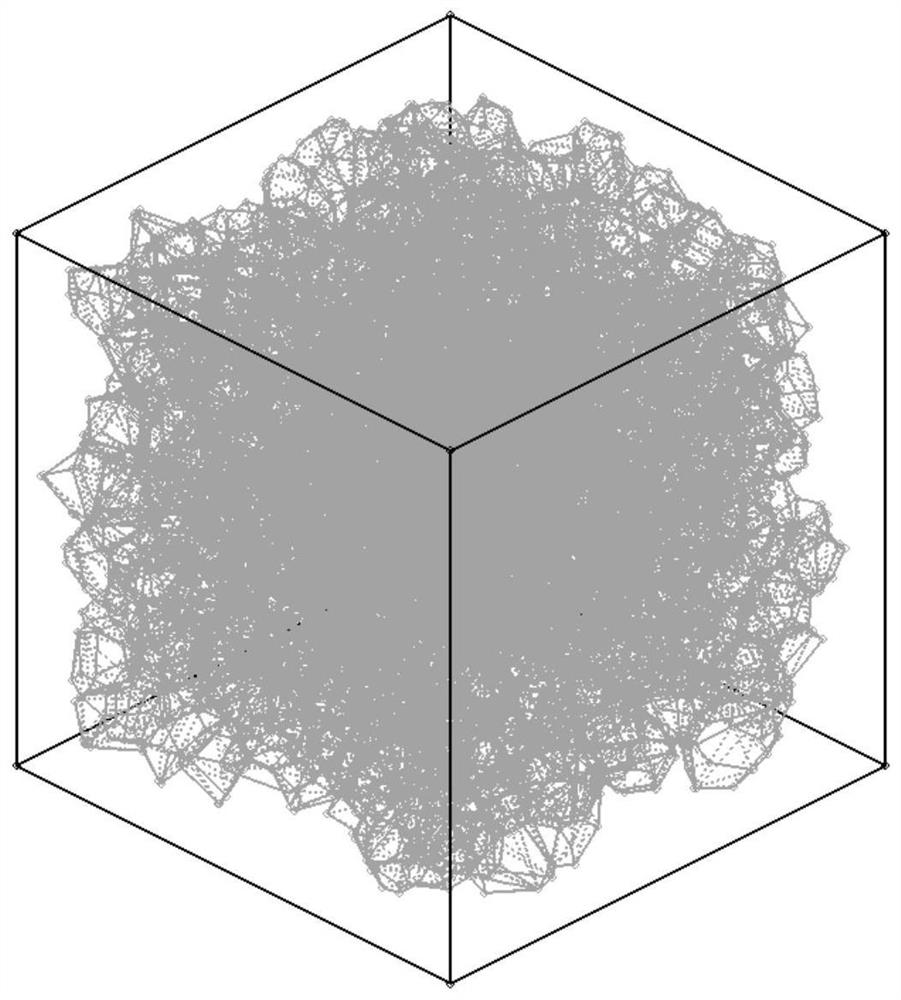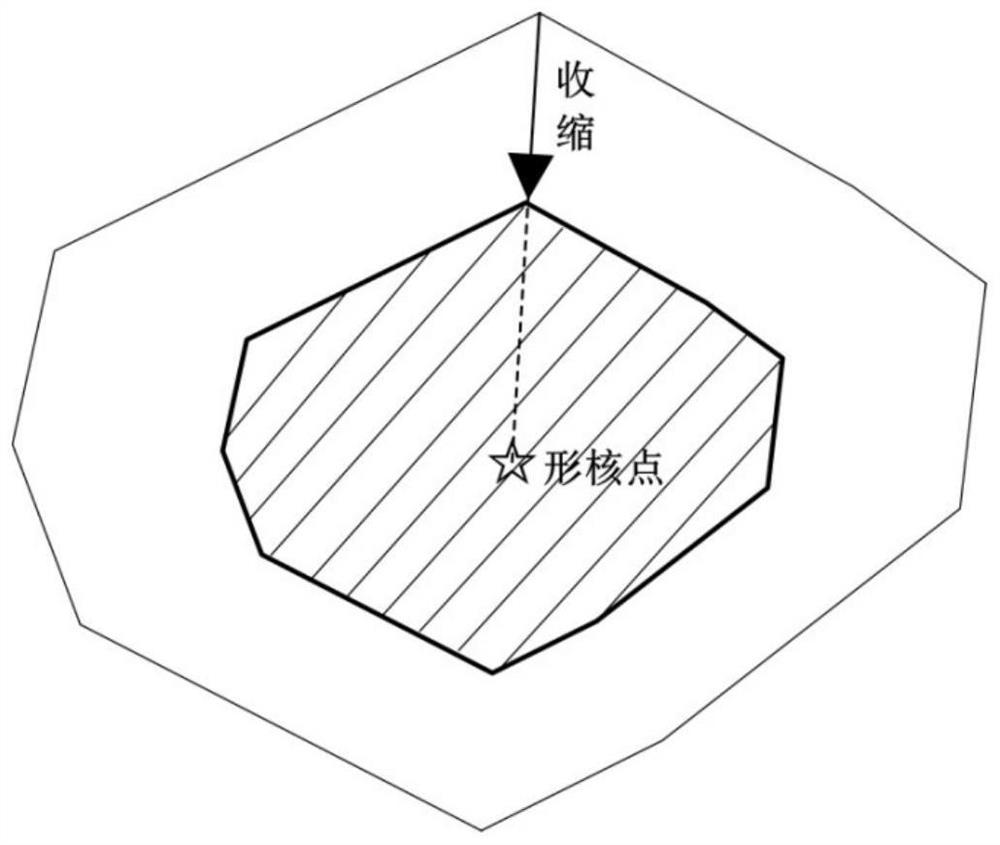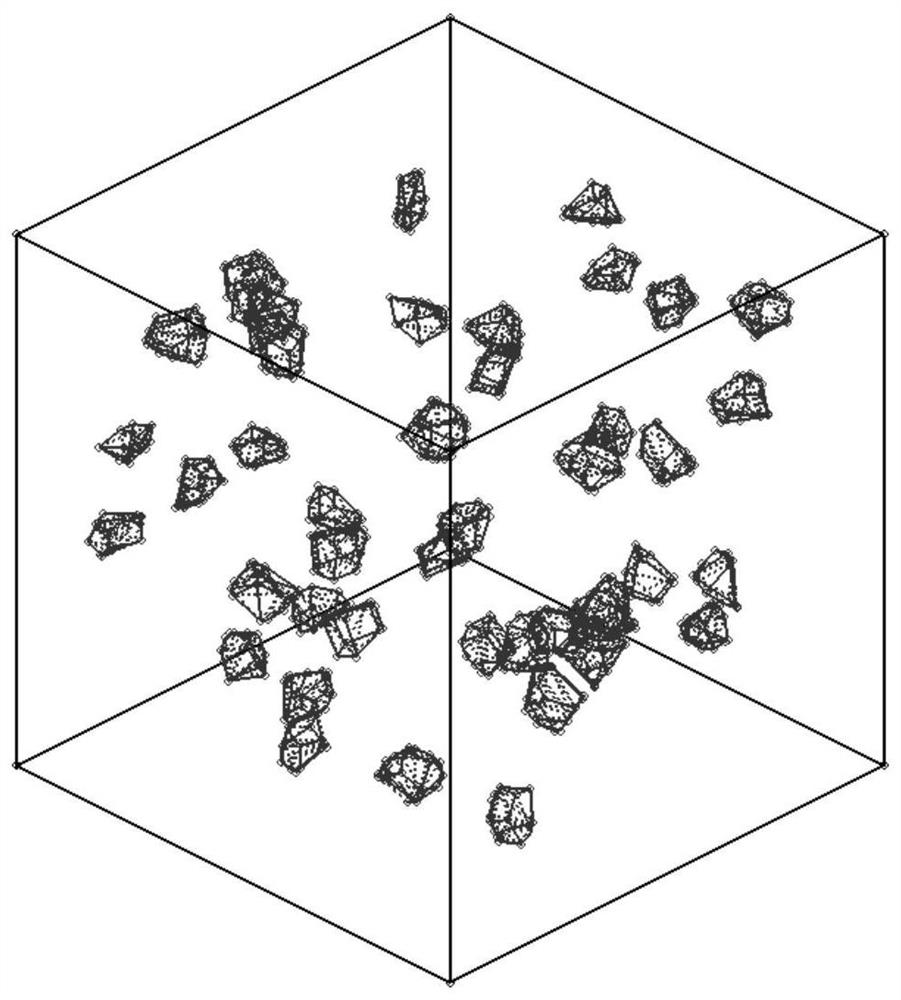Modeling method of fully-graded concrete three-dimensional mesoscopic model containing random defects
A model modeling and concrete technology, applied in 3D modeling, computer material science, computer-aided design, etc., can solve the problems of uncontrollable aggregate gradation, complex degree, no introduction of pores, etc., and achieve obvious computing efficiency advantages Effect
- Summary
- Abstract
- Description
- Claims
- Application Information
AI Technical Summary
Problems solved by technology
Method used
Image
Examples
Embodiment Construction
[0052] The present invention will be further described below in conjunction with drawings and embodiments.
[0053] A method for modeling a three-dimensional mesoscopic model of fully graded concrete containing random defects in this embodiment comprises the following steps:
[0054] Step 1: Establish a length 100cm, width 100cm, height 100cm, volume 100 3 cm 3 Cube (a special cuboid), 2000 seed points are distributed in the cuboid;
[0055] Step 2: Divide the cuboid described in Step 1 into a three-dimensional Voronoi graph with an irregularity K=0.2 to generate 2000 substantially equal-diameter convex polyhedron cells. Delete the convex polyhedron cells that do not completely fall within the cuboid area, and the final remaining convex polyhedron cells are 1055, such as figure 1 shown. For each convex polyhedron cell, calculate the distance between two adjacent vertices on the cell, and when the distance between two adjacent vertices is less than 0.1, merge the two vertic...
PUM
 Login to View More
Login to View More Abstract
Description
Claims
Application Information
 Login to View More
Login to View More - R&D
- Intellectual Property
- Life Sciences
- Materials
- Tech Scout
- Unparalleled Data Quality
- Higher Quality Content
- 60% Fewer Hallucinations
Browse by: Latest US Patents, China's latest patents, Technical Efficacy Thesaurus, Application Domain, Technology Topic, Popular Technical Reports.
© 2025 PatSnap. All rights reserved.Legal|Privacy policy|Modern Slavery Act Transparency Statement|Sitemap|About US| Contact US: help@patsnap.com



